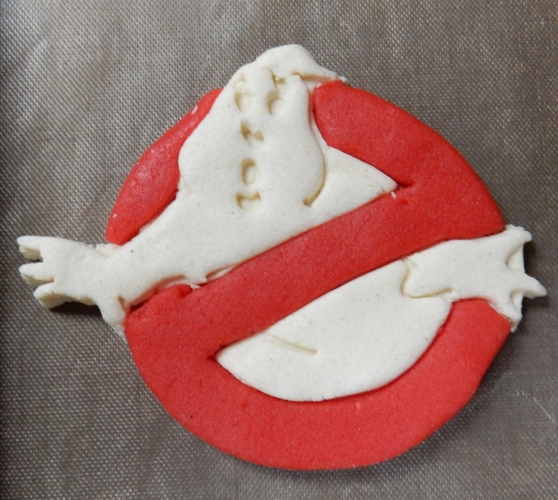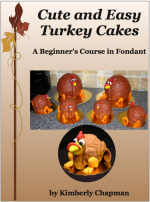Disclaimer: this post includes use of a tool I received free in exchange for featuring it in a project. This post does not include any affiliate links.
I’m very much involved lately with my local Women’s Institute group, the Cambridge Ladybirds, and we’ve been looking for ways to take action on the national WI resolution against food waste. To that end, we had a little friendly competition at our January meeting to make something out of leftovers currently in our pantries, fridges, and freezers.
When this idea came up at our committee meeting I said, “Guys, I make cakes. You do understand that at ANY GIVEN TIME I can use those rules to make cake balls, right?”
Because as most cake decorators know, carving cakes results in a lot of cake scraps, often mixed with icing. While there are some people who throw that out, thrifty decorators know better! We put those scraps in ziplock bags or in tubs in our freezers, and the next time we need to make cake balls or cake pops, we have the stuff we need right there at hand.
I also usually have extra ganache frozen in little square chunks on hand as well, because if I have cream that needs using soon it’s relatively easy for me to mix it up with chocolate and freeze it in my old Wilton “brownie bites” silicone pan (which I’ve never used for making brownies but is a good small square mould!).
So it was an easy decision for me to make cakeballs for the competition, especially since I had leftover yellow fondant from the cake I made for our group’s Christmas party:

There’s a running joke about last year’s Christmas party having “so much cheese” so I made a cheese-shaped cake with some of the group’s members represented as mice.
But covering cake calls with fondant can be tricky. It’s easier to dip them in melted chocolate, so I had to think about how I wanted to do the fondant cover in a way that wouldn’t give people too much of a lump of pleated-together fondant to bite.
Then I remembered that I still had a couple of products left to review from the box of free samples sent to me by Mister Chef, including this 15 Cavity Mini Flowers Non Stick Silicone Baking Mould (they don’t have a photo on their store site at the time of this post, but they do have one on their Amazon UK store here). When they first sent me the mould I wasn’t sure what to do with it since I’m generally not a fan of shaped baking moulds as they rarely turn out with good detail on baked goods. Or even if they do, the details get lost if you put any icing on it.
But the mould turned out to be a great way to make shaped cake balls. I dusted the mould with corn starch and rolled out some of the fondant to about 2-3 mm thick; thin enough to not be overwhelming, but still thick enough to allow some stretch so I could push it down into the mould while avoiding pleats.

I didn’t measure the thickness of the fondant; I went by what felt right. That’s something that can only come with practice. I’d never done this particular application before and it took me a couple of goes to get it so it wasn’t tearing as I pushed it in. Be brave and give it a go…you’re not committing to it until you actually put the cake ball stuff in, so go ahead and try, fail, wad it up and try again. And remember, if it all goes badly you can always just eat the evidence!
The trick to getting the fondant in there without pleating is to drape it loosely over the hole and then gently nudge it down in, pulling out pleats as they form at the top which feeds more material downwards. Just like when you’re covering a cake with fondant, you need to resist the urge to pinch pleats together and instead gently pull them out. This will slowly form a cup shape that drops into place and then at the very end you can push the fondant into the mould. Don’t worry about pushing it too firmly, though, because pushing the cake ball material on it later will help finish that job.

Drape the fondant over and guide it in with gravity helping you.

As pleats form, gently pull them open and keep feeding the excess downwards.
Once you’re happy with the fondant’s placement in the mould, carefully trim the excess from the top. Make sure you don’t go down into the cavity at all or else you’ll end up with a gap. If you trim it and end with a little gap, pinch up some more fondant to level it off.
Next, place some cake ball mix into the hole. On my first attempt I put in too much, possibly because the entire time I was doing this I had a hungry-eyed audience…

“What do you mean I can’t trim the excess with my teeth? What is this ‘hygiene’ you speak of? I call it OPPRESSION.”
Put small amounts in at a time, pushing them firmly down to the bottom but not too hard. You don’t want to push the cake ball material through the fondant down there, but you want to fill it up firmly. Fill it to the point of being level.
To cap it off, it’s easiest if you can find a circle cutter that matches the diameter of the top of the mould. I went through my Ateco graduated set until I found the closest one that was slightly over versus slightly under. You want to err on the side of slightly over in this case because you can work a tiny bit of excess into the top part, but if you don’t have enough to cover, cake ball mix will fall out.

Testing the cutter against the actual mould.
Then simply roll out a bit more fondant, use the cutter you chose, brush a bit of water around the edge of one side, and put that wet edge against the cake ball in the mould. Gently push it down on all sides to get it stuck firmly on.
Pull the sides of the mould to loosen the cake ball, then turn the mould over and let gravity help you get it out. If you need to push, do so carefully and evenly so you don’t distort it as it comes out. If you put enough corn starch in, it should slide out fairly easily.

This is how my first attempt looked when it slid out.

This is how it looked when I brushed off the excess corn starch and ran my palms around the seam edge to smooth it out a bit.

Then I cut it in half to ensure there was a nice ratio of fondant to cake ball mixture.

See? She isn’t all that deprived after all!
Once I was sure the method had worked, I went into production-mode. I rolled out more fondant at a time, cut it with a larger circle cutter, filled each cavity, and then went back to trim.
Some tips for trimming excess in any kind of mould: 1) Obviously don’t use a sharp knife on a delicate mould, and whatever knife you use, be super careful or you could wreck your mould. If you’re inexperienced, use a plastic knife. 2) Go from the middle outwards to avoid pulling your material out of the mould as you cut (especially with less-sharp knives).

Start in the middle and cut to one side so you’re pushing your material against the mould, not pulling it out.

Then reverse the knife and cut the other way. Some shapes may require you do this multiple times from more angles. Just go carefully so you don’t damage your mould, and always sweeping towards the outside of the cavity.
I made a lot of cake balls pretty quickly once I got into it, and then decided they were a bit plain being all one colour. So I airbrushed them with a bit of red hoping to bring out the flower’s details, but then they kind of looked like nasty boils. So then I went back over the red with metallic gold airbrush spray and that made them look shiny and nice. I also added some long-ago leftover red sugar pearls I bought for Rudolph noses.

Floral cake balls, all lined up for serving.
So there you have it! There are lots of shaped mini pans/moulds available on the market, so if like me you’ve thought they wouldn’t be so useful because icing ends up obscuring the detail, try instead using the pan to shape the icing!
Oh, and I won two of the three titles from the contest that inspired this whole thing: Best Tasting and Best Presented. Woohoo for cake balls reducing food waste!







































